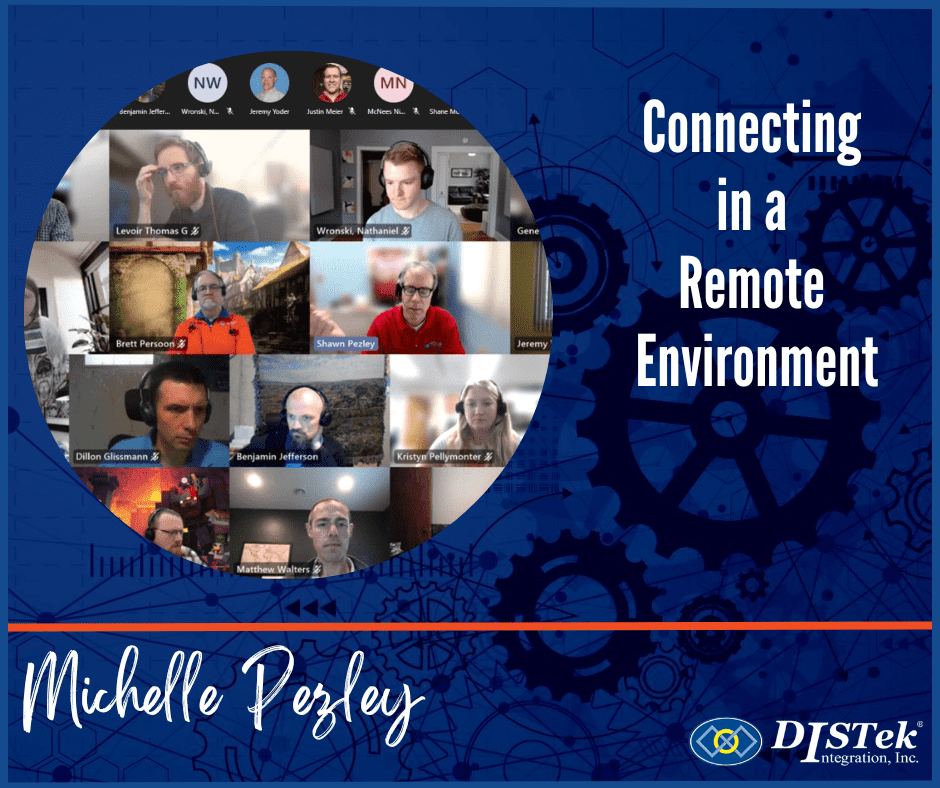Forward
Like many businesses, the global COVID-19 pandemic forced DISTek to quickly pivot in order to keep our employee-owners safe in the early months of 2020. Accommodations were made on extremely short notice to allow our teams to perform remote work. What we learned, as a result of the forced switch, was that we were not only extremely adaptable, but we were also exceedingly successful at managing the change. This resulted in a re-evaluation of our policy and ultimately, we offered permanent work from home, as well as hybrid split time options to all of our employees that did not have a physical requirement to be located within an office. We also changed our recruitment strategies to no longer be contingent on a physical location, which opened us up to a much larger talent pool. As a result, I, Ben Niemann, DISTek Software Engineer, was able to join DISTek as a remote, work from home employee-owner and am happy to share my musings on the subject in this blog post.
Introduction
According to the Stanford Digital Economy Lab, it is estimated that in 2022 almost 50% of Americans will work remotely in some capacity. Fifty percent! As many of us settle into this digital age, or the new normal as it is called, it has become increasingly clear that remote work is not going away anytime soon. For some, this can be seen as a nuisance; a deviation from a simpler approach where people shared ideas in a conference room or passing in the hallway. To others, it is their salvation, where reduced commuting times and a better work-life balance take priority over some of the offerings of a typical office setting. Now that the country has adjusted to remote work in some type of capacity, what are some lessons learned from those entrenched in remote work daily? How can teams overcome the challenges that come with working remotely, providing more value than ever.
The Power of Remote Work
Here at DISTek, as a company that focuses on software, the transition to increased remote work was easier compared to some other industries. It was crucial along that path to ensure that the quality and efficiency of the work, at a minimum, remained the same but ideally improved. It might seem simple, but people perform better when placed in an environment that supports the individual. Some people just accomplish more in the quiet setting of their own home. Flexibility is also a central element of a remote team. The ability to work within your own schedule can be a powerful tool that promotes creativity and being more productive. Finally, a component of a remote team that goes unaccounted for sometimes is that they tend to be more diverse, and data shows that a diverse team can generate more unique solutions.
Pitfalls to Avoid
Unfortunately, remote work cannot all be positives. There are disadvantages to remote work that can be seen in our own lives or through others. Struggles with work-home life separation or household distractions consistently rise to the top of remote workers’ complaints, but one of the more critical pieces that many face today is plainly the lack of human interaction. So how do teams avoid these hazards and build an environment that encourages growth?
Because most software development work needs some type of collaboration, whether it is with the customer or within your team, it can be challenging to determine what level of communication is needed. Is it just a MS Teams message? Does it require a meeting? Pair programming? Be wary of too much communication. When an individual is buried by meetings, it can become overwhelming. Conversely, not enough communication will eventually lead to breakdowns. Every team will have its own dynamic and level of communication that works well.
Identifying team or individual inefficiencies can also be challenging in a virtual environment. While having cameras on will help with seeing subtle cues, it is not a replacement for in-person discussions. Recognizing traits such as disinterest in work or being socially distant can help a team identify core issues and put a plan in place. Co-workers, managers, and supervisors all need to be aware of these traits and work together to build a team where a circle of safety exists.
Finally, there is one vital topic that cannot be avoided when talking about remote work and that is reduced time in-person with co-workers. Unfortunately, most opponents of work-from-home policies will cite this as the defining crutch in remote work. There is truth to that statement. We are all human after all and even the most introverted can benefit from an in-person event sometimes. The challenge is to identify when and how much in-person time is needed. Once a quarter? Once a month? Do you use that time for team building or for a workshop? Again, every team is different. Work together to find out what works best.
Conclusion
Remote work is fairly new to most companies, and everyone is learning what works best and what does not. What can be seen though, is that there is power in remote work and when wielded correctly, can help improve work-life balance, generate innovative ideas, and increase quality. Teams working remotely or that have remote team members should learn to embrace this shift in workplace culture, as it has shown it can create remarkable results.





